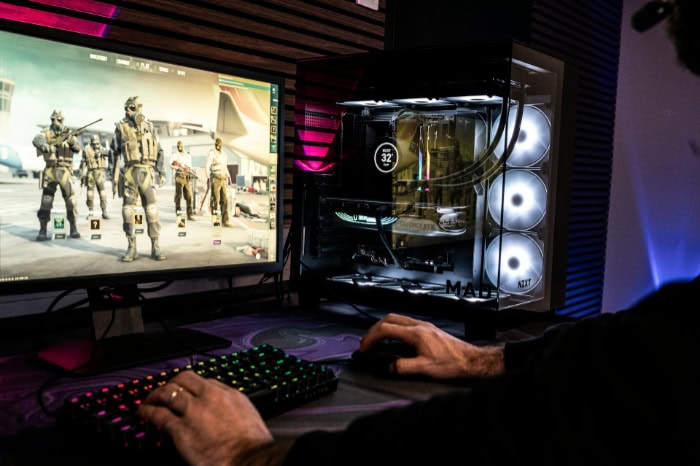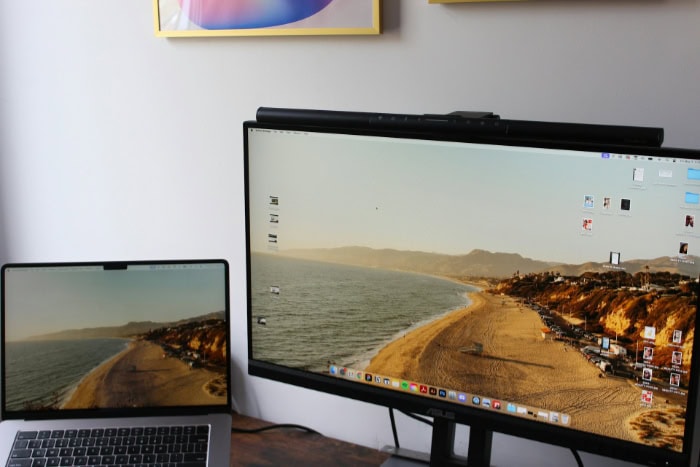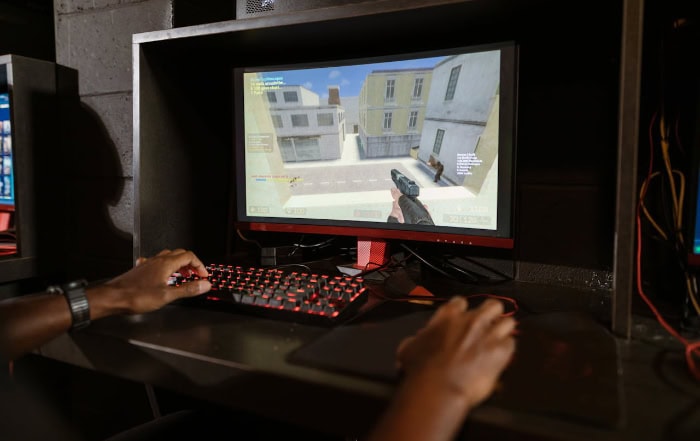1ms vs. 4ms Monitor Response Time: Is Faster Always Better?

Chasing a smoother, sharper gaming experience often leads to one age-old debate: does monitor response time truly matter, and by how much? Gamers and power users frequently spot terms like 1ms and 4ms in monitor specs, sparking questions about real-world impact and value for money.
Response time promises to reveal how quickly pixels shift between shades, affecting everything from motion blur in fast-paced shooters to color accuracy for creative work. But does a mere three-millisecond difference really change what you see and feel on screen, or are other factors more important?
Technical Foundations of Response Time
Before getting swept up in marketing claims or flashy monitor boxes, it helps to understand what response time actually means and how it impacts what you see. Response time is a measurement of how quickly a monitor’s pixels can shift from one color to another.
Shorter response times generally lead to clearer, sharper images during fast movement, which can be crucial for games or video playback. However, not all response times are measured the same way, nor are all screens built to handle those demands equally.
How Response Time is Measured
Two main methods define how manufacturers report response time: Gray-to-Gray (GtG) and Moving Picture Response Time (MPRT). GtG measures the duration a pixel takes to transition between two shades of gray, typically used because this transition happens much faster than shifting between fully saturated colors.
A lower GtG value, like 1ms, means less ghosting or motion blur. MPRT, in contrast, measures how long a pixel remains visible during moving images, focusing more on motion clarity instead of just static color changes.
Here’s where things get tricky. Not all manufacturers test these numbers using the same conditions. Some use faster or more aggressive settings that may produce artifacts, while others might only measure the fastest possible scenario, not average conditions.
Marketing can sometimes prioritize the lowest number possible for headlines, even if that figure rarely represents everyday usage. As a result, a 1ms response time on one monitor does not always directly compare to 1ms on another.
Panel Technology Limitations
Panel technology choices play a major role in response times, and each type comes with its own strengths and weaknesses. TN (Twisted Nematic) panels have long dominated the 1ms response time category.
Their pixels can rapidly transition, which helps reduce ghosting and motion blur in high-speed gaming. However, TN panels often lag behind in color quality and have narrower viewing angles compared to other types.
IPS (In-Plane Switching) and VA (Vertical Alignment) panels are commonly rated around 4ms, though newer models have started to narrow this gap. IPS panels offer vibrant colors and excellent viewing angles, making them favorites among creative professionals and casual users alike.
VA panels excel in producing deep blacks and strong contrast, ideal for watching movies or editing photos.
To meet lower response time claims, manufacturers often apply overdrive technology, which pushes pixels to change states more quickly. While overdrive can reduce blurring, aggressive settings sometimes introduce unwanted artifacts like inverse ghosting or halos around moving objects.
Balancing response speed with visual quality becomes a careful act, and not every monitor gets it right. The panel’s natural strengths and the manufacturer’s tuning will both influence how noticeable the response time is during real use.
Gaming Performance Differences

Gamers often debate the practical effects of monitor response time, especially when performance is on the line. The gap between a 1ms and a 4ms monitor can sound substantial, but the real-world experience tells a more nuanced story.
Differences become especially pronounced during certain types of gaming, with competitive esports requiring every millisecond of speed, while other genres are much more forgiving.
Competitive Gaming Impact
Fast-paced games like first-person shooters and esports titles bring response time into the spotlight. A monitor with a 1ms response time helps minimize visible ghosting and motion blur, so fast-moving targets appear sharp and clear.
Every frame counts in these games, since clear image transitions allow players to react more quickly to opponents darting across the screen. Even a split second of blurring can mean the difference between a win and a loss.
Alongside response time, input latency and refresh rate work together to define how responsive the gaming experience feels. Players using monitors with both high refresh rates and low response times notice smoother motion and more precise control.
While the numbers suggest a three-millisecond gap, in high-stakes competitive play, even marginal improvements can be worthwhile. Some pro gamers claim to feel the difference, especially during intense firefights where every detail matters.
Casual Gaming Suitability
Not every game demands lightning-fast reaction times. Role-playing games, strategy titles, and most console games place more emphasis on immersive visuals, story, or slower-paced tactical play.
For these genres, a monitor with a 4ms response time usually performs exceptionally well, keeping ghosting and motion blur at bay for nearly all eyes. The subtle difference between 1ms and 4ms becomes virtually impossible to detect for most people during slower on-screen movement.
Human perception has its limits, and studies on visual thresholds show that response times under 5ms are typically fast enough to eliminate distracting afterimages for non-competitive players. Unless you are hunting for every fraction of a second, both 1ms and 4ms monitors deliver smooth, enjoyable gameplay for casual and narrative-driven experiences.
The focus shifts from performance to visuals, where panel quality and color reproduction can matter even more than pure speed.
Display Quality Trade-Offs

Performance metrics often grab the headlines, but display quality can define your comfort and satisfaction during long hours of use. The choice of panel technology plays a significant role in how colors appear, how wide you can sit from the screen without distortion, and how vivid the darkest and brightest scenes look.
A monitor’s response time is just one part of a much larger equation.
Color and Viewing Angles
IPS and VA panels, which commonly have 4ms response times, are widely celebrated for their superior color accuracy and consistency across the screen. IPS panels, in particular, shine when it comes to vibrant, true-to-life color reproduction.
Images pop with more depth, and subtle gradients show up faithfully both for gaming and creative work. Wide viewing angles are another advantage, allowing the picture to remain stable and accurate even when viewed from the side, above, or below.
TN panels, often reaching 1ms response times, have their limitations in this area. Colors can appear a bit washed out, and shifting your position leads to rapid changes in contrast and hue.
For users who primarily view the screen straight on, this may be manageable, but sharing your display or working with detailed color tasks can quickly reveal these shortcomings. Art, photography, and video editing demand the color consistency that only IPS or, in some cases, VA panels can deliver.
Brightness and Contrast
Contrast and brightness are crucial for making images look rich and lifelike, especially in dark scenes or well-lit rooms. VA panels, which usually have a 4ms response time, excel at delivering deep blacks and strong contrast ratios.
Nighttime scenes in movies or games feel more immersive, with subtler gradations between shadows and highlights.
TN panels, favored for their faster response times, generally fall short when it comes to contrast and brightness. Dark scenes may appear slightly gray or muddy rather than truly black, and bright areas can lack intensity.
IPS panels sit somewhere in the middle, offering respectable contrast and strong brightness that suits a variety of environments. Still, VA’s strengths in contrast deliver a more cinematic feel for those who prioritize media consumption or creative projects.
The pursuit of the fastest response time should never come at the expense of the visual qualities that bring images to life.
User-Specific Value Analysis

Choosing the right monitor often boils down to balancing technical specifications with personal needs and budget constraints. The allure of lightning-fast response times may be strong, but the best fit depends on how the screen will actually be used day-to-day.
Not every user benefits in the same way from the fastest numbers, and higher performance often comes at a noticeable price.
Cost Differentials
Monitors boasting 1ms response times, especially those with high-quality IPS panels, often command a significant price premium. Manufacturers invest in advanced technology and stricter quality control to deliver both rapid response and appealing visual performance, and those costs are passed on to the buyer.
TN-based 1ms monitors may be more affordable, but typically sacrifice color accuracy and viewing angles in the process. IPS or VA panels with 4ms response times are usually less expensive, providing balanced image quality for a wider audience without the extra financial burden.
Use-Case Optimization
The fastest 1ms monitors shine brightest in competitive environments. Esports players and those passionate about first-person shooters or battle royale titles benefit from every millisecond gained.
In virtual reality, quicker response times help reduce motion sickness and create a more convincing sense of presence. Gamers chasing peak performance or who play at a professional level may find the investment worthwhile, especially when combined with high refresh rates.
For content creators, students, office users, and general entertainment, a 4ms monitor strikes a practical balance. Editing photos, watching videos, or writing documents rarely demands ultra-fast response.
The visual strengths of IPS or VA panels, like accurate colors and strong contrast, tend to matter more for these tasks. Most users never notice the difference between 1ms and 4ms during regular activity, so saving money or prioritizing panel quality often makes more sense.
Each use case brings its own priorities, making it important to match specifications to real needs rather than chasing numbers for their own sake.
Conclusion
Choosing between a 1ms and a 4ms response time often comes down to personal priorities and how you use your monitor. Competitive gamers chasing every possible advantage will appreciate the crisp, blur-free motion that a true 1ms panel can deliver, especially when paired with a high refresh rate.
For everyone else, the difference between 1ms and 4ms is typically too subtle to affect daily use or enjoyment.
Most users stand to benefit more by focusing on panel technology and refresh rate. IPS and VA panels with 4ms response times bring gorgeous colors, wide viewing angles, and satisfying contrast, all while providing performance that keeps up with movies, media, and everyday gaming.
Unless you sit in the esports or VR elite, prioritize the features that genuinely impact comfort and quality. For most people, a well-balanced monitor will deliver an experience that is both visually rewarding and worth every penny.


